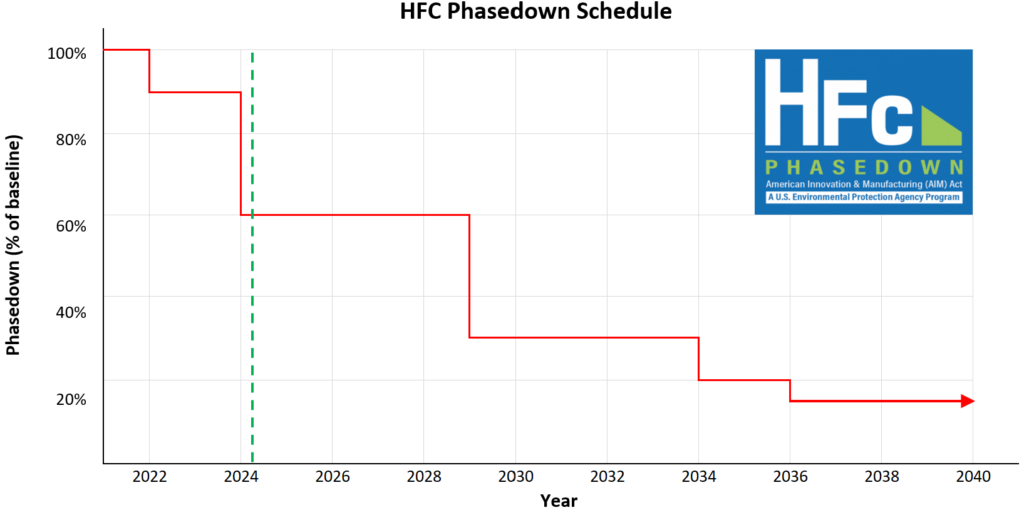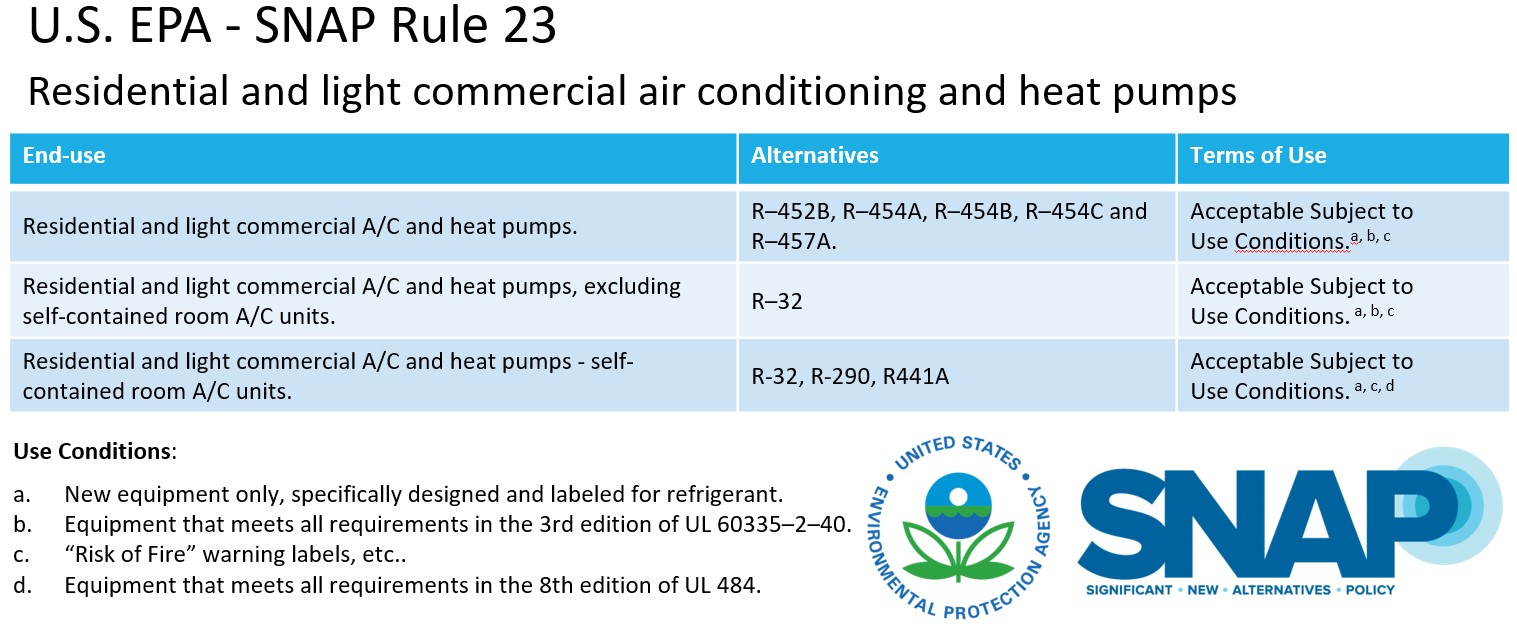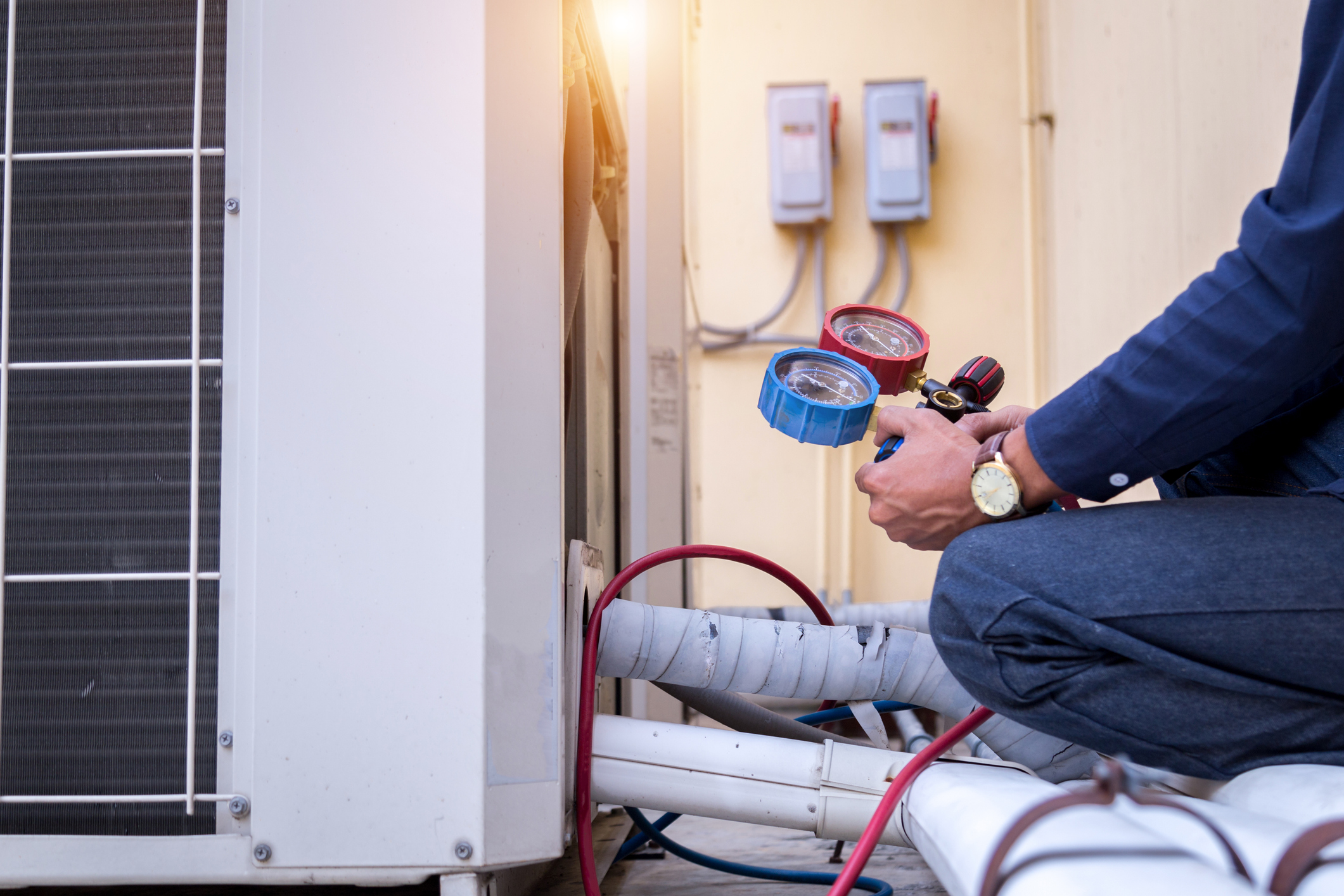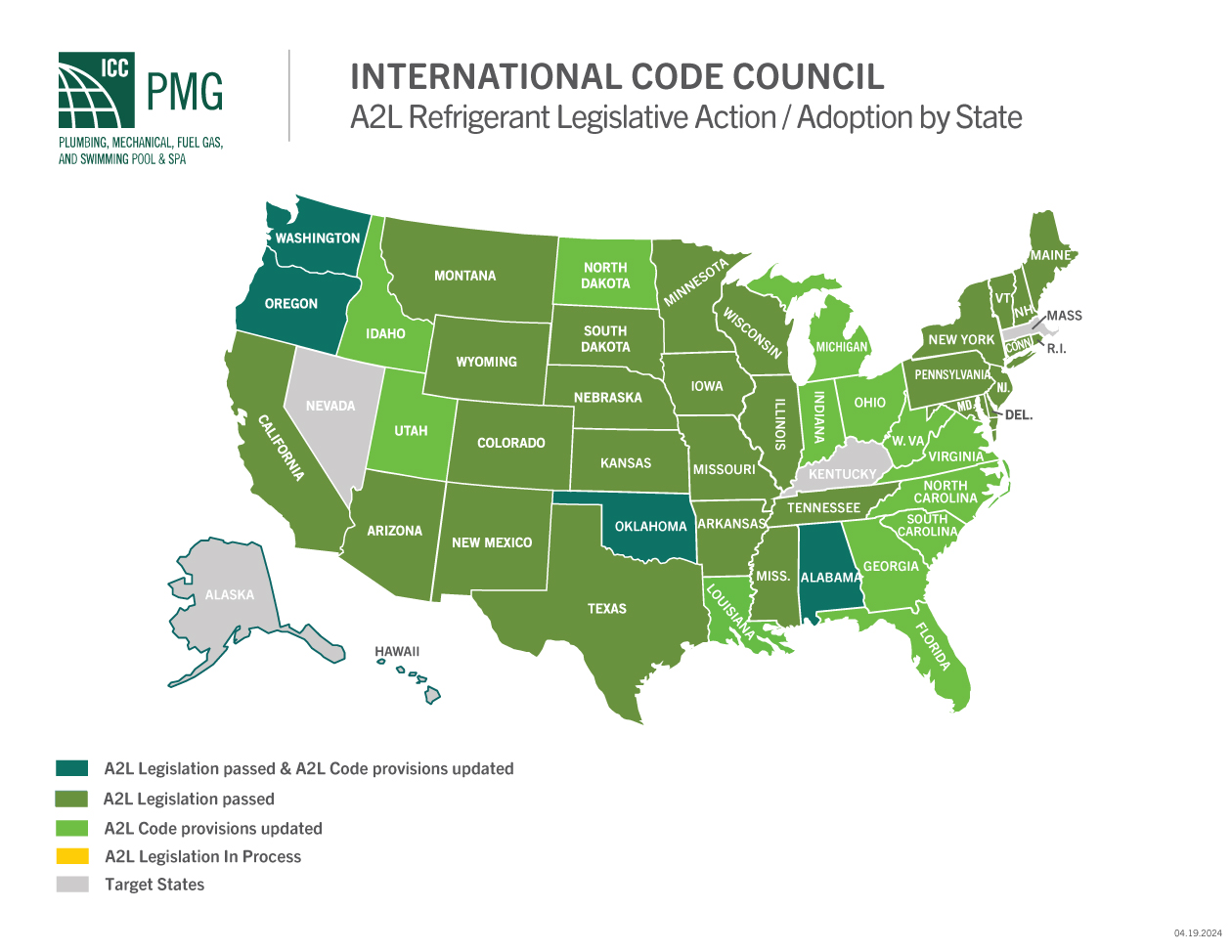
EPA Phasedown of Hydrofluorocarbon Refrigerants: Where Do We Stand?
By understanding the HFC phasedown schedule, and knowing what refrigerants the EPA has established as alternative refrigerants to HFCs, we can look back over the first two years of the SNAP program to see where the industry stands.
The United States is two years into the Environmental Protection Agency’s (EPA) program mandating a reduction in the production and use of hydrofluorocarbon (HFC) refrigerants.
EPA Regulations on HFC Refrigerants
On January 1, 2022, the EPA mandate went into effect with a 10 percent reduction in the production and use of HFC refrigerants from previous baseline levels. On January 1, 2024, the EPA increased the reduction level to 40 percent. As seen in the graph below, the HFC phasedown will continue at this 40 percent reduction level for the next five years, at which time the industry will see another 30 percent reduction in the production and use of HFCs.

The EPA, through its Significant New Alternative Policy (SNAP) Program, has established what refrigerants can be used as ‘an alternative or acceptable’ refrigerant to HFCs, for specific applications. With SNAP Rule 23, A2L refrigerants were recognized as substitutes for the ozone-depleting HFC substances used in residential and light commercial air conditioning and heat pump systems.
- A2Ls are a next-generation refrigerant that is safe, environmentally friendly and flexible
- A2Ls are increasingly replacing HFCs in many applications, due to their lower global warming potential
- A2Ls are a widely available class of refrigerants that the building community already knows

By understanding the HFC phasedown schedule, and knowing what refrigerants the EPA has established as alternative refrigerants to HFCs, we can look back over the first two years of the program to see where the industry stands.
Over the past two years, the International Code Council and their HVAC industry partners, the Air-conditioning, Heating, & Refrigeration Institute (AHRI), Plumbing-Heating-Cooling Contractors Association (PHCC), Air Conditioning Contractors of America (ACCA) and Heating Air-conditioning & Refrigeration Distributors International (HARDI), have launched campaigns to prepare professionals tied to the built environment for the changes that are underway.
Some of the changes required to facilitate the phasedown of HFC refrigerants include changes to industry standards, the building code, the mechanical code, the fire code and the residential code. These codes and several industry standards had to be updated to cover the use of A2L refrigerants within the built environment. In jurisdictions across the U.S., these changes have required local code amendments, or legislative actions, to support the safe transition to the alternative A2L refrigerants.
Standards Updates Incorporating A2L Refrigerants
Looking at industry standards, there are multiple standards from the American Society of Heating, Refrigerating and Air-conditioning Engineers (ASHRAE) covering refrigerants that are referenced by the International Codes® (I-Codes). In addition, there are standards from UL Solutions (UL) covering HVAC equipment that are also referenced by the codes. The versions of these standards referenced by the 2021 and earlier versions of the I-Codes do not have suitable coverage for A2L refrigerants and had to be updated.
The following standards are available from ASHRAE:
- The 2022 version of ASHRAE Standard 15 has been updated and released, covering safety standards for refrigeration systems
- The 2022 version of the ASHRAE Standard 34 has been updated and released, covering the designation and safety classification of refrigerants
In addition to these ASHRAE standards, the following equipment standards are available from UL,
- UL 484 covers room air conditioners
- UL 60335-2-40 covers household heat pumps and air conditioners
- UL 60335-2-89 covers commercial refrigerating appliances
The latest versions of these UL equipment standards include coverage for equipment utilizing A2L refrigerants.
All of these ASHRAE and UL standards have been updated and released and are available to help facilitate a smooth and safe transition to A2Ls.

Updates to the International Codes
Like the ASHRAE and UL standards, the 2021 and earlier versions of the I-Codes don’t have suitable coverage for A2L refrigerants. They do not allow A2L refrigerants to be used for human comfort use such as residential heating/air and light commercial. However, the 2024 I-Codes now address A2Ls and allow for these applications. The 2024 updates to the I-Codes, including the International Mechanical Code®, International Building Code®, International Fire Code® and International Residential Code® have been completed.
- The 2024 edition of these codes allows the use of A2Ls for human comfort uses
- A2L coverage is now aligned with the latest, 2022 editions of the ASHRAE 15 and 34 standards
- HVAC equipment needs to comply with the latest equipment standards, UL 484, 60335-2-40, or 60335-2-89
- All code references in the I-Codes are to the latest standards, eliminating any potential conflicts
However, the industry is currently facing a challenge: as of now, the 2024 I-Codes haven’t been adopted in any jurisdictions. For a seamless shift towards A2Ls, the existing codes must undergo modifications to incorporate the language of the 2024 A2L codes, or the 2024 I-Codes themselves should be adopted and implemented.
The Code Council’s PMG Hot Topics page, titled “Preparing for A2L Refrigerants”, provides videos from the Code Council and industry partners that address some of the different aspects of the resulting transition to A2L refrigerants that are important for building inspectors, code officials and contractors. The Hot Topics page also includes a series of documents identifying the A2L refrigerant-related code provisions of the 2024 I-Codes that should be considered as amendments to the 2021, 2018, 2015 or 2012 editions of the I-Codes. In addition to these documents, the website also includes links to other Code Council resources, as well as other industry resources relevant to A2Ls.
Legislation and Code Adoptions
To facilitate the transition from HFCs to A2Ls, AHRI, trade associations and other groups in the HVAC industry have taken on a grassroots effort to enact legislation in each state that will allow the use of all SNAP Refrigerants, which are primarily A2Ls, according to their conditions of use. The map below summarizes the progress of these efforts.

For updated and detailed state-specific adoption and legislative actions about A2L refrigerants please visit the AHRI Refrigerant Building Code Map online.
Learn more about the Code Council’s PMG support and available resources here.








